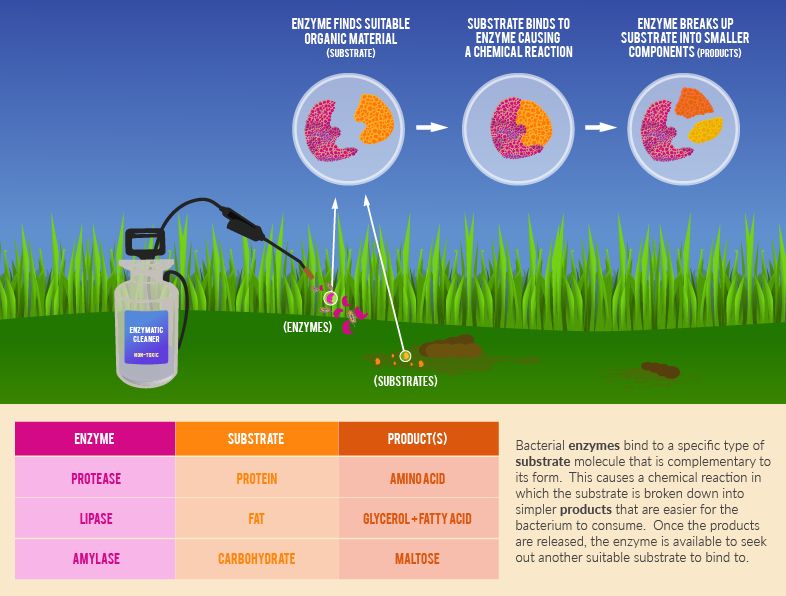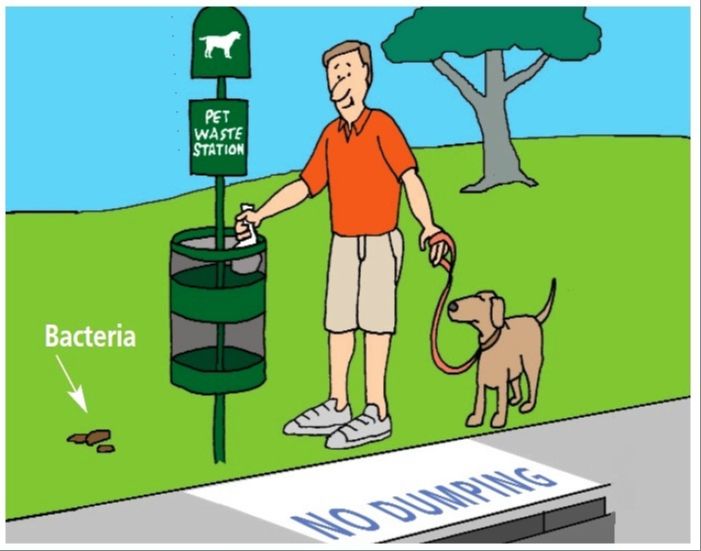Introduction
Dog waste that is not properly disposed of can pose significant health and environmental hazards. According to the EPA, dog waste contains nutrients and pathogens that can contaminate water sources if allowed to wash into storm drains and waterways.
Specifically, dog feces contains nitrogen and phosphorus, which in large quantities can deplete oxygen in water necessary for aquatic life. Pathogens like Giardia and Salmonella can also infect water and sicken animals and humans. EPA estimates just 2-3 days of waste from 100 dogs can temporarily close a bay from contamination.
Beyond water pollution, dog waste also spreads parasites like hookworms and roundworms, which can infect other pets and humans, especially children. Roundworm eggs can survive in soil for years. Overall, dog waste is clearly an environmental problem needing proper cleanup.
Prevention
Preventing dog waste contamination begins with proper disposal. According to the Snohomish County website, pet owners should dispose of dog feces in the garbage or toilet where it can be properly treated, not left on the ground or in storm drains where it can pollute waterways (“Pet Waste,” n.d.).

Pet owners should utilize designated dog waste stations, if available, or bring their own bags when walking dogs to immediately pick up and contain waste. The Baltimore County resource recommends carrying bags at all times to scoop poop before bacteria spreads (“It’s no joke,” 2020).
In addition to cleaning up after every walk or yard time, the NH Department of Environmental Services advises regularly clearing accumulated pet waste from yards or designated outdoor areas to stop feces and urine from seeping into soil or leaching into groundwater (“For the Sake,” 2022).
Physical Removal
One of the most straightforward ways to remove dog poop from soil is through physical removal of the contaminated area. This involves:
Scooping up waste – Using a small shovel, scoop or garden trowel, you can remove any solid dog poop sitting on top of the soil. Dispose of it properly in the trash.
Digging up affected soil – For waste that has seeped deeper into the soil, you may need to dig up the contaminated layer. Scoop out a few inches of soil from the area and dispose of it.
Replacing contaminated layer – Once you’ve removed the contaminated soil, fill the hole back in with fresh soil or sod. This will help remove any leftover traces of waste from that area in your yard. Water the new layer lightly to help it settle.
The key is removing all visible solid waste and any soil that has been in direct contact with it. This physical extraction helps eliminate dog poop from the yard at a microbial level. Just be sure to properly dispose of the waste and contaminated soil.
Chemical Treatment
Using chemicals is one of the fastest ways to break down and decontaminate dog poop from soil.

Enzymes
Enzyme-based cleaners contain bacteria and enzymes that help decompose organic matter like dog feces. Products like Doggie Doo Dissolver contain natural enzymes that accelerate the breakdown process.
Ammonia
Household ammonia is an effective yet risky chemical treatment. When diluted properly with water, ammonia’s alkaline properties help dissolve dog poop. However, ammonia is toxic and must be handled carefully. Overuse can harm plants, pets, and people.
Bleach
Bleach or hydrogen peroxide kill bacteria in dog feces. However, both chemicals may damage soil, plants, and groundwater if used improperly. Limit bleach to small, localized areas of contamination. Never pour it directly into soil or lawns.
Natural Remedies
There are some natural and household ingredients that can help dissolve and break down dog poop in soil:
Vinegar
Vinegar is an acidic solution that can help dissolve dog poop. The acetic acid in vinegar helps break down the fats and proteins in feces (Source). To use vinegar, mix equal parts water and white distilled vinegar in a spray bottle. Spray the affected area thoroughly and let sit for several hours before rinsing away with water. The vinegar smell will dissipate as it dries.
Baking Soda
Baking soda is a natural deodorizer and can help neutralize odors from dog poop. Make a paste with baking soda and water and apply to the affected area. Let it sit for 15-20 minutes before rinsing away with water (Source). The baking soda will help absorb moisture and dissolve waste.
Hydrogen Peroxide
Hydrogen peroxide is an effective disinfectant and can help sanitize soil contaminated by dog poop. Mix 1 part hydrogen peroxide with 9 parts water and spray or pour onto the affected area. Allow it to soak in for 10-15 minutes before rinsing off with water (Source). The bubbling reaction helps break down organic matter.
Microbial Solutions
One effective way to decontaminate dog poop from soil is by using beneficial microbes and compost activators. Certain strains of bacteria and fungi can help break down dog waste and render it harmless. Products containing microbial cultures like Bacillus licheniformis, Bacillus subtilis, and Trichoderma harzianum can accelerate the decomposition process and neutralize pathogens in feces (https://www.amazon.com/Doggie-Dooley-Original-Ground-Disposal/dp/B00WMMMIX6).
These microbial solutions work by outcompeting harmful bacteria and secreting enzymes that digest organic matter. Over time, they can reduce dog waste to liquid fertilizer that is safely absorbed into the ground. According to one study, antibiotic treatment of dogs reduced fecal bacteria counts, indicating the key role microbes play in waste breakdown (https://pubmed.ncbi.nlm.nih.gov/305504/).
Some popular dog waste compost activators include Doggie Dooley, Dog Rocks, and Nature’s Miracle. These products can be added directly to poop piles or septic systems to accelerate decomposition. Using microbial solutions is an earth-friendly way to tackle dog poop without harsh chemicals.
Landscape Design
There are several landscape design strategies that can help deter dogs from pooping in your yard. Gravel or paving high-traffic areas where dogs tend to go can make the environment less appealing. The gravel or pavement is an unfamiliar surface, and dogs prefer soft grass or dirt. Proper drainage is also important to avoid wet spots where dogs may be attracted to go. Installing drainage ditches, rain gardens, or gravel trenches can help keep things dry. Finally, building raised garden beds edged with rocks or wood can make it harder for dogs to get into your landscaped beds to dig and poop. The raised elevation and perimeter barrier helps protect the foliage within.
Some key landscaping design tips include:
- Pave or add gravel to high traffic areas and dog “hot spots” (https://www.lawnstarter.com/blog/lawn-care-2/how-to-prevent-neighbors-dog-pooping-in-yard/)
- Improve drainage to eliminate wet areas where dogs tend to go
- Install raised garden beds with perimeter edging for protection
With smart landscaping strategies, you can design your yard to naturally repel dogs and keep them from treating it as a toilet.
Lawn Care
Proper lawn care is essential for reducing the negative impacts of dog waste on your grass. Fertilizing, aerating, and overseeding can all help strengthen your lawn and prevent damage.

Fertilizing your lawn provides nutrients like nitrogen that promote healthy grass growth. Look for fertilizers designed for dog owners, as these contain microbes that help break down waste 1. Apply fertilizer in the spring and fall to nourish grass roots.
Aerating involves punching small holes in the soil to improve air and water flow to grass roots. This helps the lawn better absorb nutrients and withstand dog traffic. Use a core aerator tool or hire a professional to aerate annually.
Overseeding thickens up thin or damaged areas of your lawn. This involves spreading grass seeds over existing grass to fill in bare spots. Overseeding in fall allows new grass to establish before winter. Rake up debris before overseeding so seeds reach the soil.
Following proper mowing, irrigation, and pest control practices will also promote a lush, durable lawn. Maintaining a healthy grass layer makes it easier for your lawn to recover from dog waste.
Hazards
Dog waste can pose serious health hazards if left in the yard. According to research from the EPA, dog poop contains bacteria, viruses, parasites, and other pathogens that can infect humans and other animals (Source 1). Diseases spread through dog feces include:
- Salmonellosis – Causes diarrhea, fever, and abdominal cramps
- Roundworms – Can cause vision loss, fever, and cough
- Hookworms – Can enter through skin and cause cutaneous larva migrans
- Whipworms – Can cause rectal prolapse and anemia
- Giardia – Leads to chronic diarrhea
Dog poop also poses environmental dangers if it enters waterways or leaches into groundwater. According to the EPA, dog waste contributes to algae growth and oxygen depletion in rivers and lakes (Source 2). It contains nitrogen and phosphorus that can also contaminate drinking water sources.

Left on the lawn, dog poop burns and discolors grass. The high nitrogen concentration causes excessive growth, while the alkaline pH chemically burns grass blades. Dog urine contributes to lawn damage as well. According to veterinarians, the mix of feces and urine in yards creates the perfect environment for dangerous organisms to thrive (Source 3).
Conclusion
In summary, properly decontaminating dog poop from soil is important for maintaining a clean, healthy environment for pets and people. While prevention through prompt waste removal is ideal, many effective options exist for cleaning up dog waste from lawns and gardens, ranging from physical removal methods to chemical treatments and microbial solutions. Care must be taken to thoroughly remove feces and any remaining parasites or bacteria. The hazards of lingering dog waste, including spread of parasites and diseases, make proper poop removal practices essential. By using a combination of proper landscape design, lawn care, and decontamination techniques, dog owners can keep their outdoor spaces clean for all to enjoy.
Dog waste contamination poses health risks and nuisance odors. Responsible pet owners should act quickly to clean up after pets and treat any affected areas. A few simple steps make a big difference in maintaining pleasant, usable lawns and gardens. The small effort of prompt waste pickup and proper decontamination pays off in a healthier, cleaner landscape.